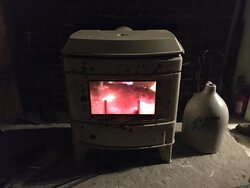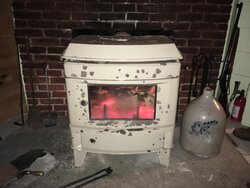Kevin Weis
Minister of Fire
At 1050 on the cat there is no smoke comming out the chimney. Smoke starts at and below 900. The Intrepid takes a steel cat now. The steel cat they advertise as activating around 450. My draft I would say is average, maybe a little below average. By design I don't know the purpose of the secondary air intake save to make sure there is some draft maintained even if the primary is closed all the way? However the primary flap has a hole in the middle of it the size of a nickel so I thought that served that purpose? I'm not inclined to close off the secondary completely but maybe leave an 1/8 or 3/16" gap. We'll see how that goes maybe in a few weeks. Appreciate your response and thoughts.





